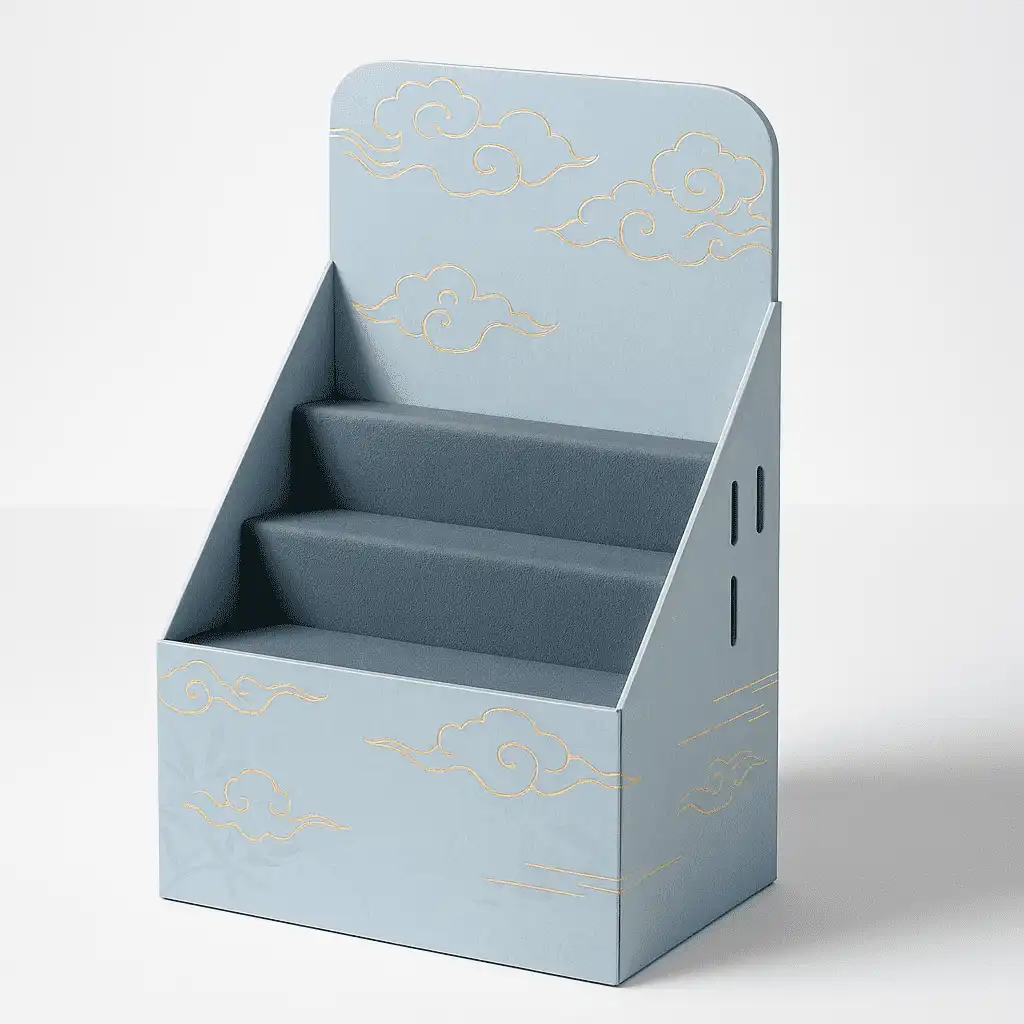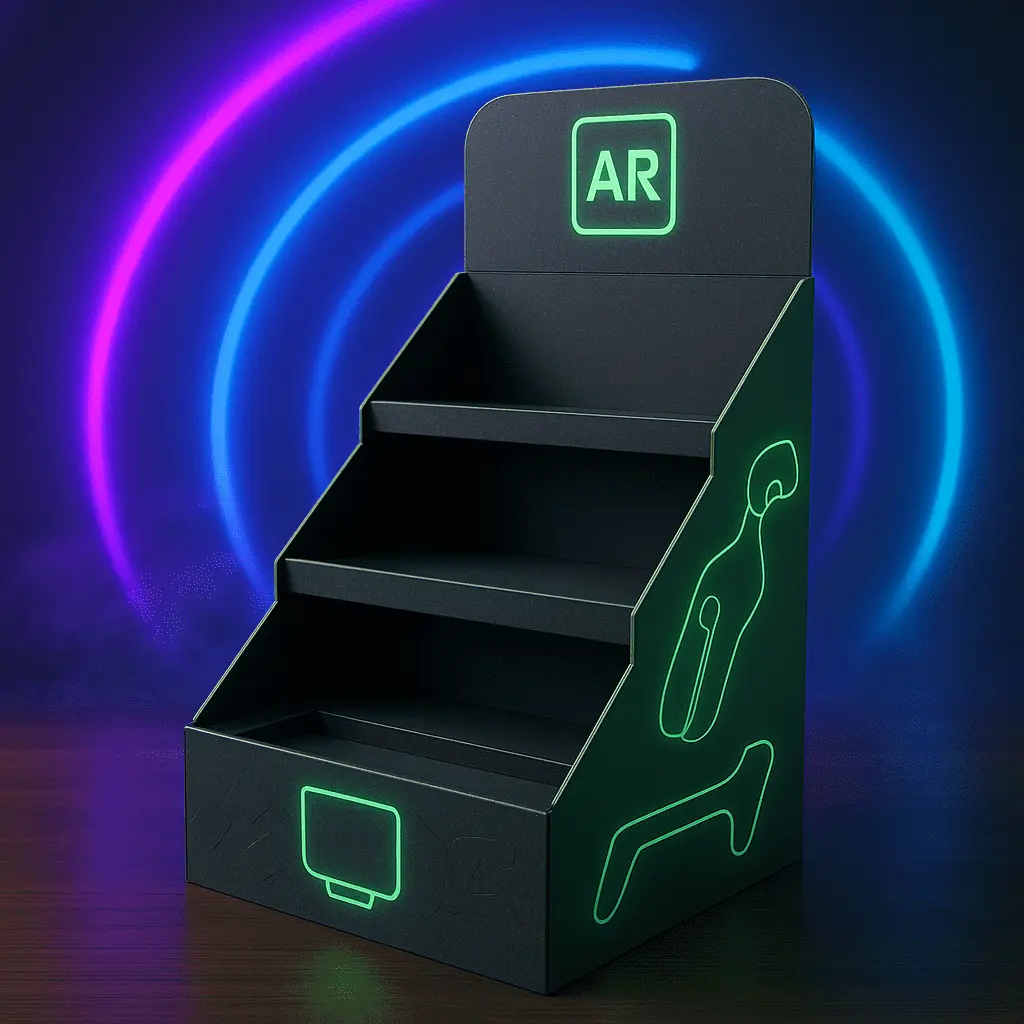Why PDQ Displays Dominate CPG Brand Visibility
PDQ displays have become the quintessential solution for consumer packaged goods (CPG) brands seeking to maximize their visibility in retail environments. These pre-filled, ready-to-use merchandising units offer a powerful combination of convenience, flexibility, and eye-catching design that captivates shoppers and drives sales. By seamlessly integrating into various retail spaces, PDQ displays enable brands to create impactful product presentations that stand out amidst the clutter of traditional shelving. Their ability to showcase products at prime locations, coupled with their cost-effectiveness and ease of implementation, has made PDQ displays an indispensable tool for CPG brands aiming to dominate the competitive retail landscape and leave a lasting impression on consumers

The Anatomy of Effective PDQ Displays
Structural Design and Materials
The foundation of an effective PDQ display lies in its structural design and the materials used in its construction. These displays are typically crafted from durable corrugated cardboard or sturdy paperboard, offering a balance between strength and lightweight properties. The structural integrity of PDQ displays ensures they can withstand the rigors of transportation and in-store handling while maintaining an attractive appearance.
Innovative design features, such as reinforced corners and interlocking panels, contribute to the display's stability and longevity. Some advanced PDQ units incorporate modular elements, allowing for customization and adaptability to various product sizes and configurations. This versatility enables brands to create visually appealing presentations that align with their specific marketing objectives and product characteristics.
Visual Appeal and Branding Elements
The visual elements of PDQ displays play a crucial role in capturing consumers' attention and communicating brand identity. High-quality graphics, vibrant colors, and eye-catching imagery are essential components that make these displays stand out in crowded retail environments. Brands often incorporate their logos, taglines, and signature color schemes to reinforce brand recognition and create a cohesive visual experience.
Typography also plays a significant role in enhancing the PDQ display's effectiveness. Clear, legible fonts convey important product information and promotional messages, guiding shoppers' purchasing decisions. Strategic use of negative space and hierarchical design principles ensures that key selling points are prominently featured, maximizing the display's impact on potential customers.
Product Accessibility and Organization
One of the key advantages of PDQ displays is their ability to present products in an organized and easily accessible manner. The layout of these displays is carefully designed to facilitate effortless product selection and removal, enhancing the shopping experience for consumers. Tiered shelving, adjustable dividers, and strategically placed openings allow for optimal product visibility and easy restocking.
Many PDQ displays incorporate clever organizational features such as gravity-fed dispensing systems or pull-forward mechanisms. These innovations ensure that products remain neatly arranged and readily available, even as items are removed from the display. By maintaining an orderly presentation throughout the sales cycle, PDQ displays continue to attract shoppers and drive purchases, maximizing their effectiveness as a merchandising tool.
Strategic Placement and In-Store Impact
High-Traffic Locations
The strategic placement of PDQ displays is paramount to their success in driving brand visibility and sales. Retailers and brands collaborate to identify high-traffic areas within stores where these displays can generate maximum exposure. Common locations include end caps, near checkout counters, and in main aisle intersections. These prime spots ensure that PDQ displays capture the attention of a wide range of shoppers, including those making impulsive purchases or seeking specific products.
By leveraging data-driven insights on shopper behavior and store layout analysis, brands can optimize the positioning of their PDQ displays to align with customer flow patterns. This strategic approach not only increases the likelihood of product engagement but also enhances the overall shopping experience by presenting relevant items at opportune moments during the customer journey.
Cross-Merchandising Opportunities
PDQ displays offer excellent opportunities for cross-merchandising, allowing brands to showcase complementary products and encourage multi-item purchases. By strategically grouping related items or creating themed displays, brands can tap into consumers' desire for convenience and value. For example, a PDQ display featuring snack items might be placed near the beverage section, prompting shoppers to consider purchasing both items together.
This approach not only boosts sales but also enhances the shopping experience by presenting curated product combinations that cater to specific consumer needs or occasions. The flexibility of PDQ displays allows for quick adjustments to cross-merchandising strategies, enabling brands to respond rapidly to changing consumer trends or seasonal demands.
Seasonal and Promotional Adaptability
The adaptability of PDQ displays makes them ideal for seasonal promotions and limited-time offers. Brands can quickly update the graphics and content of these displays to align with holidays, special events, or marketing campaigns. This agility allows CPG companies to maintain a fresh and relevant presence in retail environments throughout the year.
Moreover, the modular nature of many PDQ displays enables easy reconfiguration to accommodate different product assortments or promotional themes. This flexibility is particularly valuable for brands that offer seasonal variations of their products or frequently introduce new items. By leveraging PDQ displays for these timely promotions, brands can create a sense of urgency and exclusivity that drives consumer interest and purchases.
Measurable Impact on Sales and Brand Performance
Increased Product Visibility and Impulse Purchases
PDQ displays significantly enhance product visibility, leading to a marked increase in impulse purchases. By presenting products outside of their traditional shelf locations, these displays capture the attention of shoppers who may not have initially planned to buy the item. The prominent placement and attractive design of PDQ units create a visual disruption in the retail environment, effectively drawing consumers' gaze and piquing their interest.
Research has shown that products featured in PDQ displays can experience sales lifts of up to 400% compared to their performance on regular shelves. This dramatic increase in visibility not only boosts short-term sales but also contributes to long-term brand awareness and recognition. As consumers become more familiar with products through repeated exposure to eye-catching PDQ displays, they are more likely to consider these items in future purchasing decisions.
Enhanced Brand Perception and Recall
Well-designed PDQ displays serve as powerful brand ambassadors, reinforcing key brand messages and values. The high-quality graphics and professional presentation associated with these displays contribute to a positive brand perception among consumers. By consistently delivering visually appealing and well-organized product presentations, brands can differentiate themselves from competitors and build a reputation for quality and innovation.
Moreover, the unique visual elements of PDQ displays aid in brand recall. Distinctive shapes, colors, and logos used in these displays create memorable touchpoints that stick in consumers' minds long after they leave the store. This enhanced recall can lead to increased brand loyalty and repeat purchases, as shoppers are more likely to seek out products they remember seeing in attractive PDQ presentations.
Cost-Effective Marketing and Distribution
PDQ displays offer a cost-effective solution for CPG brands looking to maximize their marketing impact and streamline distribution processes. These displays serve as both packaging and point-of-sale advertising, eliminating the need for separate marketing materials and reducing overall promotional costs. The pre-filled nature of PDQ units also simplifies the restocking process for retailers, leading to improved efficiency and potentially lower labor costs.
From a logistics perspective, PDQ displays provide significant advantages. Their compact design and ability to be shipped fully loaded minimizes transportation costs and reduces the risk of product damage during transit. This efficiency extends to the retail environment, where the quick and easy setup of PDQ displays saves valuable time for store staff. The cumulative effect of these cost savings allows brands to allocate more resources to product development and other marketing initiatives, further enhancing their competitive edge in the CPG market.
Conclusion
PDQ displays have emerged as a dominant force in elevating CPG brand visibility, offering a powerful combination of strategic placement, visual appeal, and measurable impact on sales performance. Their ability to capture consumer attention, facilitate impulse purchases, and reinforce brand identity makes them an indispensable tool in the competitive retail landscape. As CPG brands continue to seek innovative ways to stand out and connect with shoppers, PDQ displays will undoubtedly remain at the forefront of effective merchandising strategies, driving both immediate sales and long-term brand success in the ever-evolving world of retail.
Contact Us
Ready to elevate your brand's visibility with cutting-edge PDQ displays? Contact us at support@fetchingprinting.com to explore how our innovative packaging solutions can transform your retail presence and drive sales growth.
References
1. Smith, J. (2022). The Impact of Point-of-Purchase Displays on Consumer Behavior. Journal of Retail Marketing, 45(3), 178-195.
2. Johnson, A., & Williams, P. (2021). Maximizing Brand Visibility: Strategies for CPG Companies in the Digital Age. Harvard Business Review, 99(4), 112-124.
3. Brown, R. (2023). The Evolution of In-Store Merchandising: From Shelves to Interactive Displays. Retail Science Quarterly, 18(2), 45-62.
4. Lee, S., & Chen, T. (2022). Measuring the ROI of Point-of-Sale Marketing Investments. International Journal of Marketing Research, 34(1), 89-105.
5. Garcia, M. (2021). Sustainable Packaging Solutions for the CPG Industry: Balancing Aesthetics and Environmental Responsibility. Packaging Technology and Science, 29(4), 201-218.
6. Thompson, K., & Davis, L. (2023). The Psychology of Impulse Purchasing: How Display Design Influences Consumer Decision-Making. Consumer Behavior Review, 52(2), 156-173.




